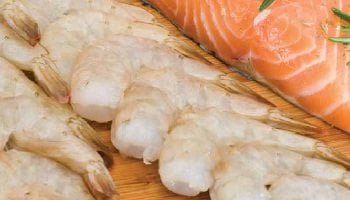
The global demand for seafood products is on the rise. But this growing tide comes with a hidden cost: a mountain of waste. The seafood processing industry discards a significant portion of its catches or harvests, generating substantial volumes of both edible and non-edible byproducts. This not only translates into financial losses but also raises serious environmental concerns.
To ensure a sustainable future for our oceans and the fishing industry, minimizing waste is paramount. This article explores various promising methods for conserving seafood products, reducing waste, and promoting a thriving industry.
A scientific review published by researchers from the Istituto di Ricerche Farmacologiche Mario Negri (IRCCS) and the Italian Institute for Planetary Health (IIPH) summarizes the chemical and physical approaches proposed in the literature to prevent seafood loss and decrease waste.
The Challenge: Reducing Seafood Waste
Discarded seafood products represent a significant financial and environmental burden. Revenue loss harms businesses, while improper waste disposal contaminates our planet. To address this challenge, we need innovative and sustainable conservation techniques.
Fish and seafood are highly perishable due to several factors:
- Microbial Growth: Bacteria multiply easily in fish, causing spoilage and potential health risks.
- Enzymatic Autolysis: After a fish dies, natural enzymes break down its proteins, affecting texture and flavor.
- Lipid Oxidation: This process, particularly in fatty fish, deteriorates taste, odor, and nutritional value.
Traditional Techniques
Traditional and most popular techniques for preserving fish and seafood include:
- Refrigeration: Cooling slows bacterial growth, extending freshness for a limited time.
- Freezing: Freezing seafood at very low temperatures (-18°C or lower) significantly extends shelf life but may affect texture.
- Cold Smoking: This method combines salting with smoking to preserve seafood and add unique flavors.
Beyond the Basics: Innovative Approaches
The industry is adopting new technologies to meet the growing demand for sustainable seafood preservation:
- Modified Atmosphere Packaging (MAP): This technique alters the gas composition inside the package to slow microbial growth and oxidation, extending shelf life.
- High-Pressure Processing (HPP): HPP uses intense pressure to inactivate pathogens and harmful bacteria while preserving flavor and nutrition.
- Natural Antimicrobials: Extracts from herbs and spices can be used to naturally extend shelf life.
- Nanotechnology: Silver nanoparticles have shown promise in combating microbes, but more research is needed to ensure safety.
- Smart Packaging: Sensors integrated into packaging can provide real-time information about freshness.
- Biodegradable Packaging: This eco-friendly alternative reduces environmental impact and holds promise for cold storage.
- Cold Plasma Treatment: This non-thermal method uses ionized gas to remove surface bacteria, extending shelf life.
- Blockchain Technology: This emerging technology can improve transparency and ensure the sustainability of seafood products.
Chemical and Physical Solutions
Researchers are exploring a variety of chemical and physical approaches to extend the shelf life of seafood products and minimize waste. However, the current research landscape (based on a review of 49 studies published between 2000 and January 2023) reveals a fragmented picture. Studies have investigated various techniques in different seafood products under diverse conditions.
Some promising chemical methods involve the use of:
- Organic Acids: These natural substances can inhibit the growth of harmful bacteria.
- Biologically Derived Preservatives: Preservatives derived from natural sources offer a potentially safer alternative to synthetic options.
Physical preservation methods being explored include:
- Cold Plasma: This technology uses ionized gas to eliminate surface bacteria on seafood.
- High Hydrostatic Pressure (HHP): HHP inactivates spoilage-causing microorganisms, extending shelf life.
- UV-C Irradiation: Ultraviolet light can be used to disinfect surfaces and combat microbes that cause spoilage.
Weighing the Options: Advantages and Challenges
Each method offers unique advantages and drawbacks. For example, chitosan-based preservatives, derived from natural sources and generally recognized as safe, appear promising. However, finding the perfect solution involves:
- Food Safety: The chosen method must effectively prevent spoilage and ensure food safety for consumers.
- Consumer Acceptance: Consumers often have reservations about chemical preservatives. Techniques that maintain the natural qualities of seafood are preferred.
- Economic Viability: The cost of implementing a preservation method must be economically viable for producers.
- Environmental Impact: Sustainable practices that minimize environmental footprint are crucial for long-term industry success.
The Road Ahead: A Call for Further Research
While these studies offer valuable insights, more research is needed. We need to delve into the mechanisms of spoilage across the production chain and critically assess waste generation at each stage. By understanding where and how waste occurs, we can develop targeted solutions.
By implementing sustainable conservation methods, the seafood processing industry can:
- Reduce Waste: Minimize environmental impact and financial losses.
- Improve Food Safety: Ensure a safe and abundant supply of seafood for future generations.
- Promote Sustainability: Contribute to a healthy planet and a thriving fishing industry.
Investing in research and development of sustainable seafood preservation methods is an investment in our future. By working together, scientists, industry leaders, and policymakers can chart a course toward a future where delicious and nutritious seafood remains available while waste is minimized, and our oceans are safeguarded.
Contact
Luisa Diomede
Department of Molecular Biochemistry and Pharmacology, Istituto di Ricerche Farmacologiche Mario Negri IRCCS
Via Mario Negri 2, 20156 Milano, Italy.
Email: luisa.diomede@marionegri.it
Reference (open access)
Andrea Conz, Enrico Davoli, Carlotta Franchi, Luisa Diomede, Seafood loss prevention and waste reduction, Food Quality and Safety, 2024;, fyae017, https://doi.org/10.1093/fqsafe/fyae017

